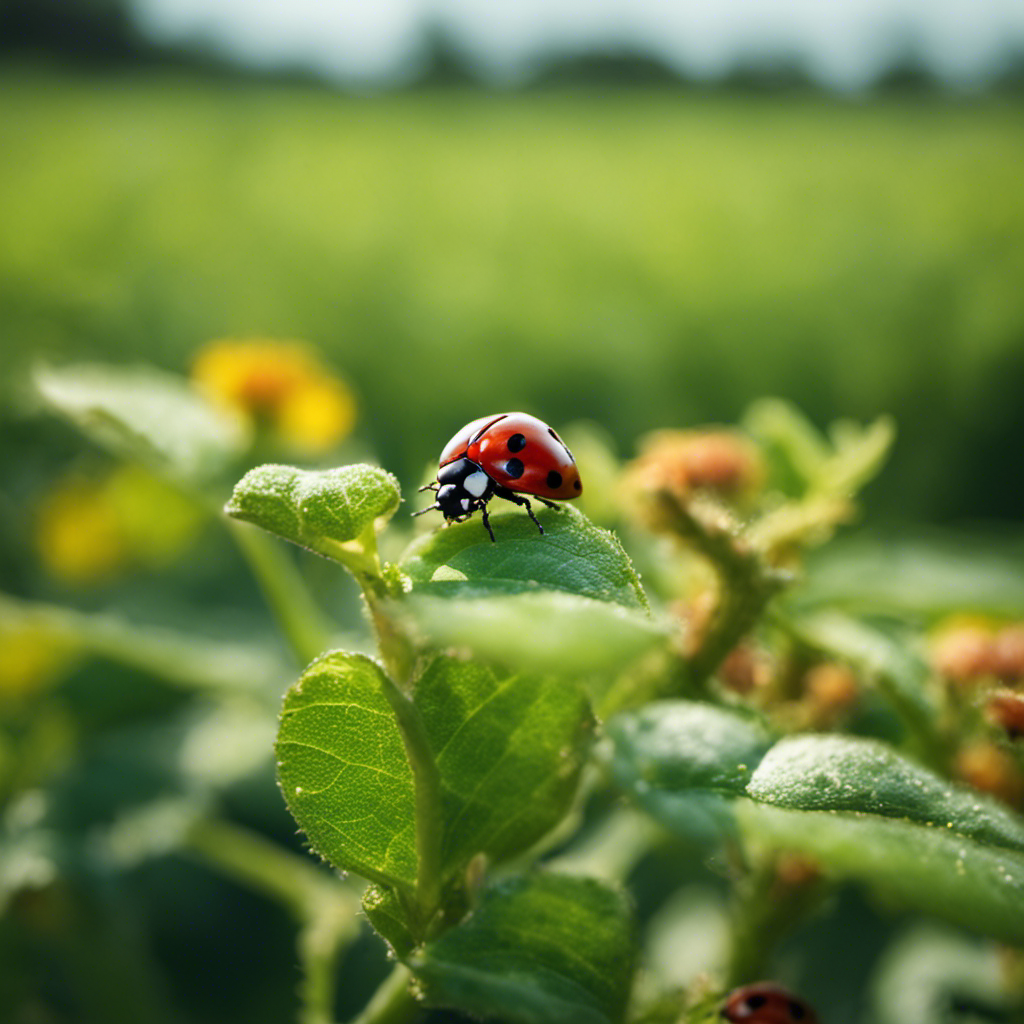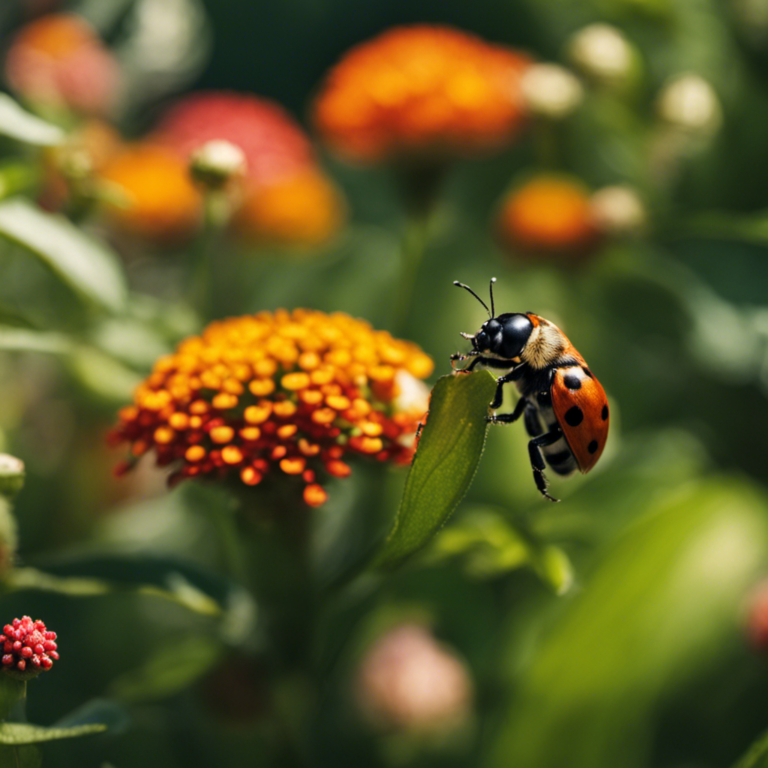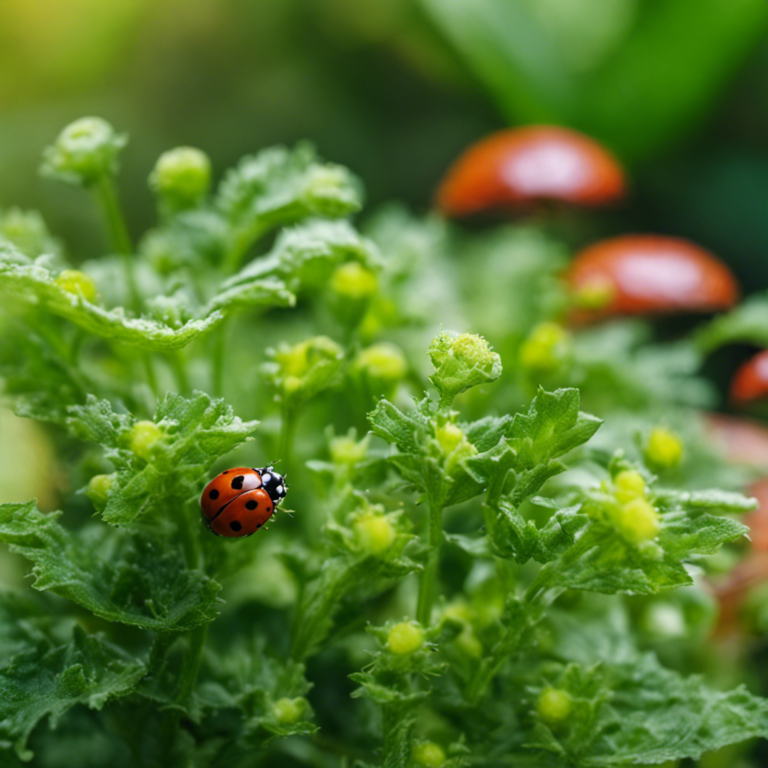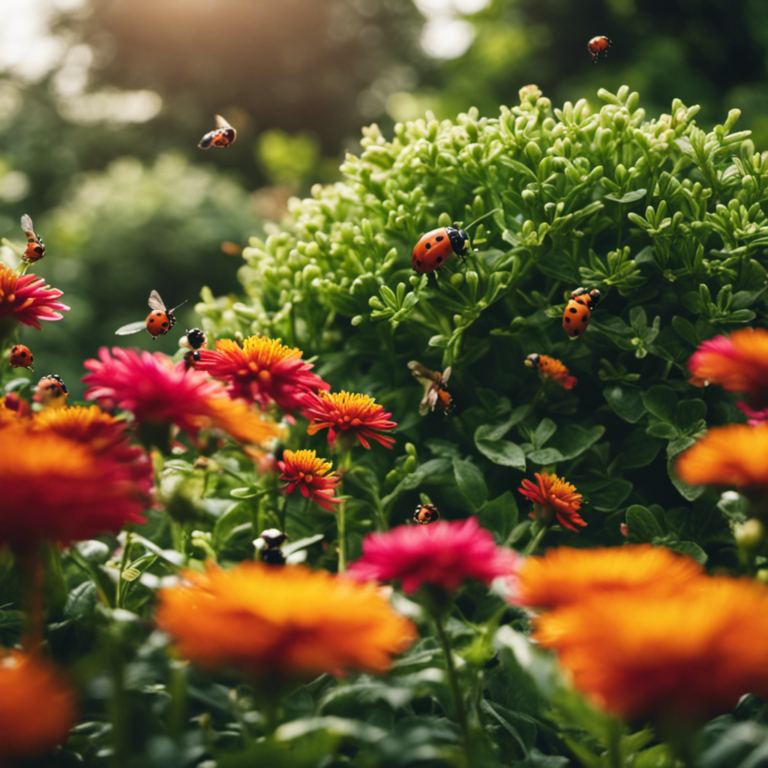Looking to keep your farm free from pests without causing harm to the environment? You’re in the right place! In this article, we’ll explore safe and eco-friendly pest control tactics for green farming.
We’ll discuss:
- Natural insect repellents
- The use of beneficial insects for pest control
- The benefits of crop rotation and companion planting techniques
- The effectiveness of physical barriers and traps
- The use of organic pesticides and sprays
By implementing these tactics, you can maintain a healthy and thriving farm while minimizing harm to the ecosystem.
Start incorporating these methods today and witness the positive impact they can have on your farm!
Key Takeaways
Adopting environmentally safe pest tactics is crucial for successful green farming. By using natural insect repellents and beneficial insects for pest control, farmers can reduce the need for harmful pesticides. This not only protects the health of the crops but also preserves the natural ecosystem.
Crop rotation and companion planting are effective strategies that disrupt pest cycles and maintain a balanced ecosystem. By alternating the types of crops planted in a field, pests are less likely to establish themselves and cause damage. Companion planting involves growing different plants together that have mutually beneficial relationships, such as repelling pests or attracting beneficial insects.
In addition to these tactics, physical barriers and traps can be used to protect crops. Installing fences, netting, or row covers can prevent pests from reaching the plants. Traps, such as sticky traps or pheromone traps, can catch and monitor pest populations, providing valuable information for pest management decisions.
When necessary, organic pesticides and sprays can be used as a safe and sustainable alternative. These products are derived from natural sources and have minimal impact on the environment. However, it is important to use them sparingly and according to label instructions to minimize any potential negative effects.
By embracing these environmentally safe pest tactics, farmers can create a strong defense for their farms, ensuring a harmonious and thriving environment for both crops and nature. As we prioritize sustainability and the health of our planet, it is essential to adopt practices that minimize harm to the environment while still ensuring successful crop production.
Natural Insect Repellents
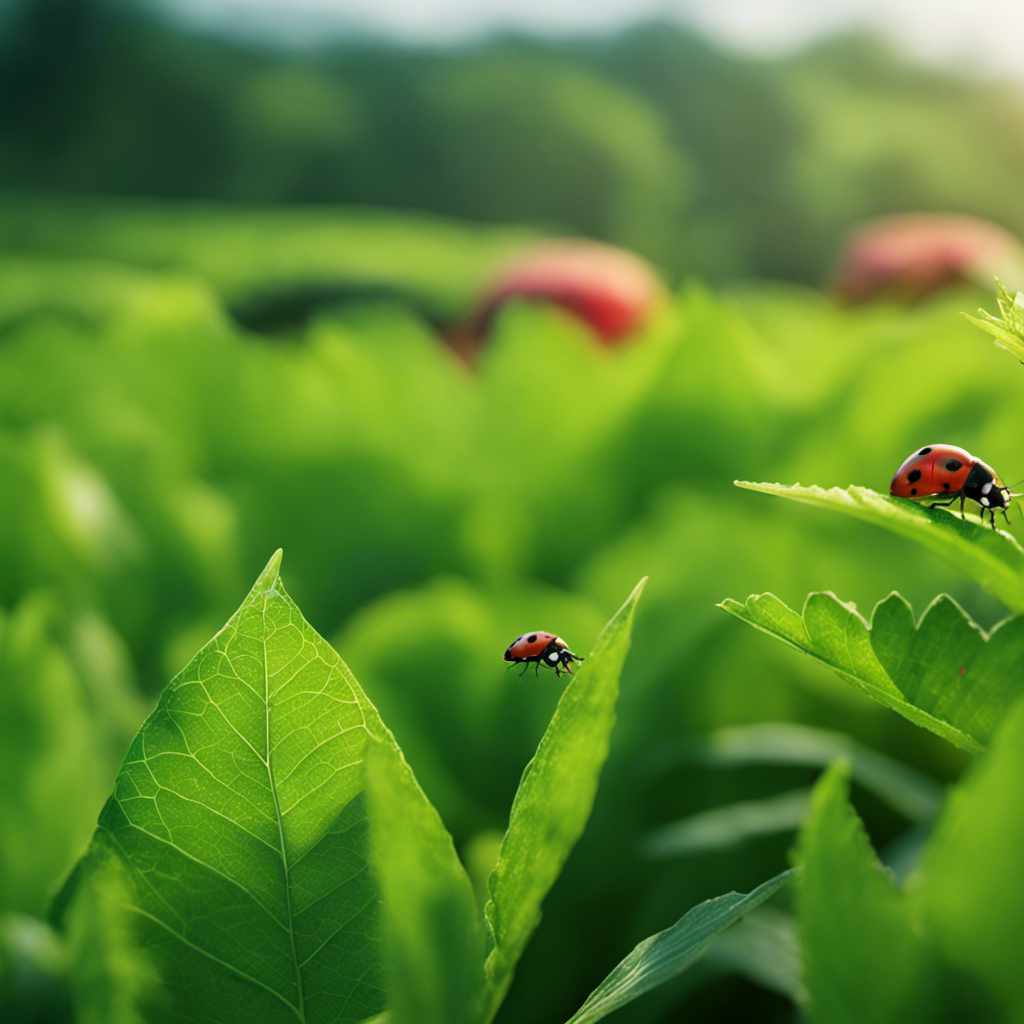
Natural Insect Repellents
To effectively repel insects naturally on your farm, start by using essential oils and plant-based sprays. Homemade remedies can be a sustainable pest management solution that’s both cost-effective and environmentally friendly.
Essential oils like peppermint, citronella, and eucalyptus have proven to be effective against a wide range of pests, including mosquitoes, flies, and ants. Simply mix a few drops of the chosen oil with water in a spray bottle and apply it to problem areas.
Plant-based sprays, made from ingredients like garlic, neem oil, or chili pepper, can also be highly effective in repelling insects. These sprays can be easily made at home and applied to crops or around the farm to create a barrier against pests.
Beneficial Insects for Pest Control
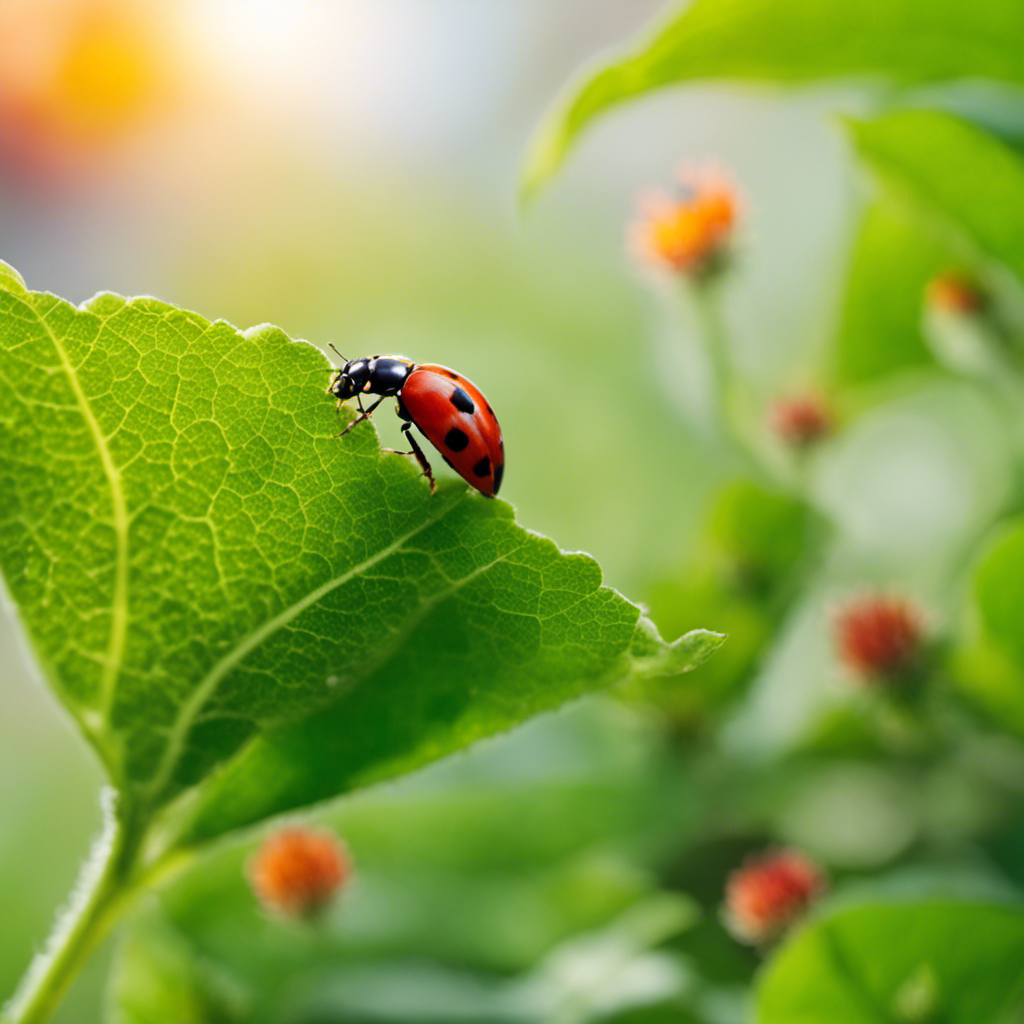
Beneficial Insects for Natural Pest Control
Ladybugs, lacewings, and parasitic wasps can be your allies in the battle against pests on your farm. These insects play a crucial role in integrated pest management and biological control methods.
Ladybugs, also known as lady beetles, feed on harmful insects like aphids and mites, which can cause damage to your crops. Lacewings are voracious predators that consume pests such as aphids and caterpillars. Parasitic wasps lay their eggs inside pests like aphids and caterpillars, using them as hosts for their larvae.
To effectively use these beneficial insects, it’s important to create a welcoming environment for them. This can be done by providing shelter, such as hedgerows or insect hotels, and minimizing the use of pesticides. By incorporating these natural pest control methods, you not only reduce the need for chemical pesticides but also promote a healthier and more sustainable farming ecosystem.
Here are some examples of beneficial insects and the pests they target:
- Ladybugs: Aphids, Mites
- Lacewings: Aphids, Caterpillars
- Parasitic Wasps: Aphids, Caterpillars
By harnessing the power of these beneficial insects, you can maintain pest control in a more environmentally friendly and effective way. As a result, you can protect your crops while minimizing the negative impact of chemical pesticides on the ecosystem. Remember, a balanced and natural approach to pest control is key to sustainable farming practices.
Quote: "Beneficial insects are nature’s own pest control, providing an eco-friendly solution for farmers."
Crop Rotation and Companion Planting

Implementing crop rotation and companion planting practices is crucial for maintaining a healthy and resilient farming ecosystem.
Crop rotation involves systematically changing the crops in a particular field over time. This helps break the cycle of pests and diseases that can harm a specific crop. Additionally, crop rotation promotes soil fertility improvement by alternating crops with different nutrient requirements, reducing the risk of nutrient depletion.
Companion planting, on the other hand, involves planting different crops together to benefit each other. For example, intercropping legumes with other crops can enhance nitrogen fixation and provide natural pest control.
Physical Barriers and Traps

Protecting your crops from pests can be achieved through the use of physical barriers and traps. These methods offer a safe and environmentally friendly approach to pest control.
Physical barriers act as a protective shield between your plants and pests, effectively preventing them from causing damage. Traps, on the other hand, are designed to attract and capture pests, helping to reduce their population.
By incorporating both physical barriers and traps into your pest management plan, you can implement an integrated approach that minimizes the need for harmful chemicals and promotes natural pest control.
Here are some commonly used physical barriers and traps that you can employ in your green farming practices:
- Netting: Use netting to create a barrier that keeps pests away from your crops.
- Row covers: These covers offer protection from pests while still allowing sunlight and air to reach your plants.
- Fences: Install fences around your farming area to prevent pests from gaining access.
- Mulches: Apply mulches around the base of your plants to discourage pests from reaching them.
In addition to these physical barriers, you can also utilize traps to further control pests. Sticky traps, pheromone traps, light traps, and bait traps are all effective options.
Organic Pesticides and Sprays
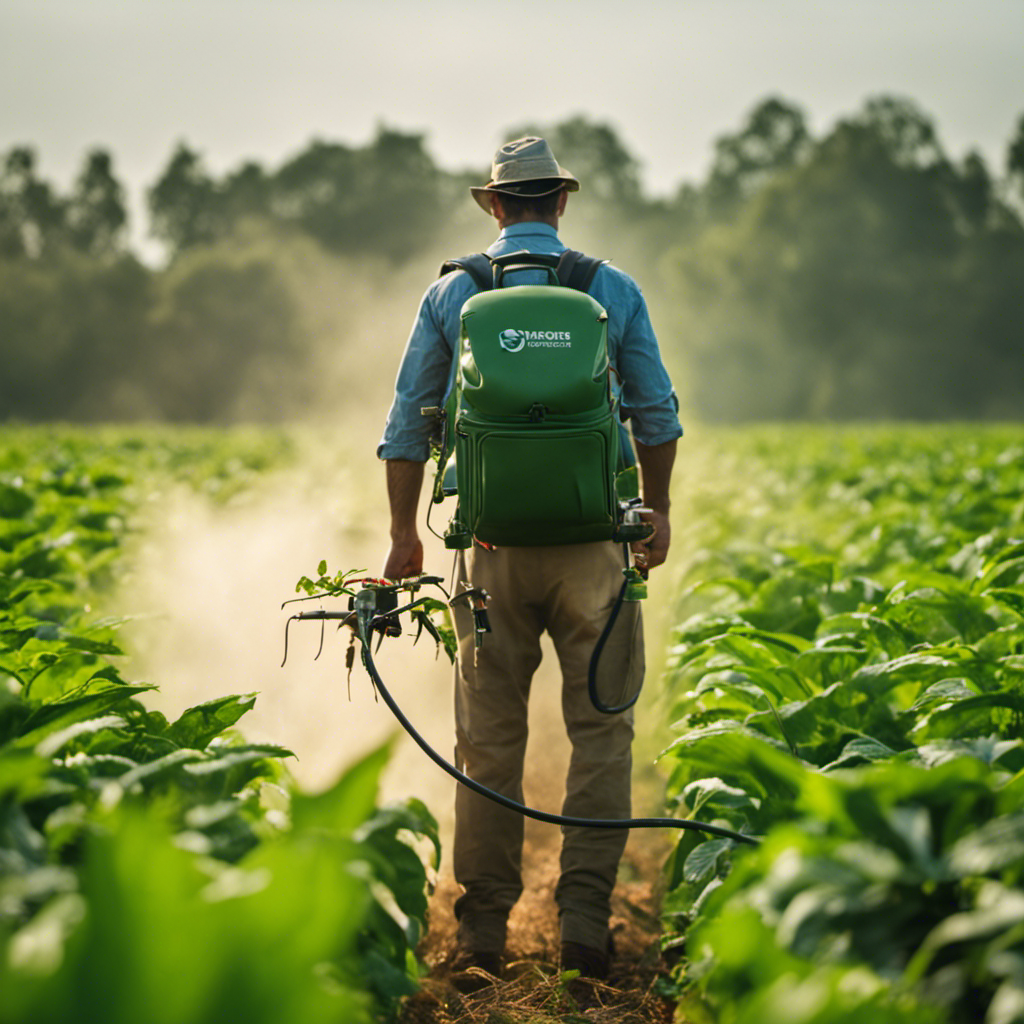
Consider incorporating organic pesticides and sprays into your pest management plan for green farming. These alternatives to chemical pesticides can help you control pests while minimizing harm to the environment and human health. Here are four non-toxic pest control methods using herbal extracts as alternatives:
-
Neem oil: Derived from the neem tree, neem oil acts as a natural insect repellent and disrupts the life cycle of pests.
-
Garlic spray: Made from crushed garlic cloves and water, this spray repels insects and can deter pests like aphids and caterpillars.
-
Pyrethrin: Extracted from chrysanthemum flowers, pyrethrin is a natural insecticide that targets a wide range of pests.
-
Soap-based sprays: These sprays use soap as a base to suffocate and kill pests on contact.
Conclusion
Adopting environmentally safe pest tactics is essential for successful green farming. By using natural insect repellents and beneficial insects for pest control, farmers can reduce the need for harmful pesticides.
Crop rotation and companion planting can also disrupt pest cycles and maintain a balanced ecosystem. Additionally, physical barriers and traps can effectively protect crops.
Finally, organic pesticides and sprays offer a safe and sustainable alternative. Embracing these tactics creates a strong defense for your farm, ensuring a harmonious and thriving environment for both crops and nature.
